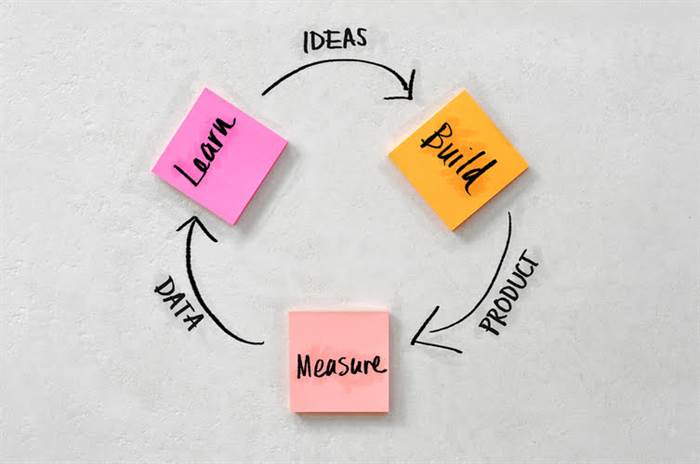The Agile model prioritizes collaboration and the implementation of small changes based on regular feedback. The Agile model accounts for shifting project requirements, which may become apparent over the course of SDLC. The verification and validation model tends to be resource-intensive and inflexible. For projects with clear requirements where testing is important, it can be useful. The Spiral model best fits large projects where the risk of issues arising is high. Changes are passed through the different SDLC phases again and again in a so-called “spiral” motion.
- During this stage, unit testing, integration testing, system testing, acceptance testing are done.
- The practice speeds up decision-making during product creation and minimizes risks while keeping all teams (and stakeholders) on the same page.
- At Svitla Systems, we have expert teams of specialists who are knowledgeable in all the major SDLC methodologies, as well as the latest and most successful methods to help you build a powerful information system.
- Instead of starting with fully known requirements, project teams implement a set of software requirements, then test, evaluate and pinpoint further requirements.
- This is a feasibility study or preliminary plan for the company to acquire any resources necessary to improve a service or build on specific infrastructure.
- The Agile SDLC model separates the product into cycles and delivers a working product very quickly.
System Analysts are knowledgeable in analysis and design techniques to solve business problems via information technology. Oftentimes, system analysts are tasked with identifying opportunity area gaps and generating organizational improvements to reach specific goals. Overall, the System Analyst is a professional who has strong interpersonal, technical, analytical, and management skills. In short, the iterative and incremental model works through multiple, repeated, and incremental cycles so developers can pinpoint which areas to improve based on previous deployments of the software.
S. Reliability Models
The project passes through four phases (planning, risk analysis, engineering and evaluation) over and over in a figurative spiral until completed, allowing for multiple rounds of refinement. As part of their embrace of this methodology, many teams also apply an Agile framework known as Scrum to help structure more complex development projects. Scrum teams work in sprints, which usually last two to four weeks, to complete assigned tasks. Daily Scrum meetings help the whole team monitor progress throughout the project.

Developers are responsible for developing the system architecture with assistance from the System Architect, evaluating and carefully selecting the right tech stack based on unique project needs. The Information System Architect architects the project across its life cycle; In short, this professional designs the software architecture and defines the main interfaces and key elements of the information system as a whole. The SDLC has grown to be critical thanks to its standardized phases that manage a balancing act between costs, quality, and time to meet modern business demands, urgency, complexity, and to top it off, with tight budgets.
DevOps Engineer
In the fifth phase, systems integration and testing are carried out by Quality Assurance (QA) professionals. They will be responsible for determining if the proposed design reaches the initial business goals set by the company. It’s possible for testing to be repeated, specifically to check for bugs, interoperability, and errors.
Surprisingly, System Development Life Cycle (SDLC), also referred to as the Software Development Life Cycle history hasn’t been as deep as software programs. The first formal description of the waterfall model was cited in a 1970 article by Winston W. Royce. Choosing the right SDLC methodology for your software development project requires careful thought. But keep in mind that a model for planning and guiding your project is only one ingredient for success. Even more important is assembling a solid team of skilled talent committed to moving the project forward through every unexpected challenge or setback. Even more rigid is the related Verification and Validation model — or V-shaped model.
Development
At the end of a sprint, the product owner verifies the code and greenlights its deployment to users. The iterative and phased stages of an SDLC benefit from the leadership of a dedicated project manager. The major goal of an SDLC is to provide cost effective and appropriate enhancements or changes to the information system that meet overall corporate goals. The project manager is responsible for executing and closing all the linear steps of planning, building, and maintaining the new or improved system throughout the process.

But only after first language ‘short-code’ (0 and 1) appeared in 1949, and the first compiler was written in 1951; there was the birth of first computer program. In 1957, FORTRAN appeared as one of the first major programming language, which was followed by Cobol. In the 175 years’ history of programming till date, humankind has developed over 700 programming languages.
What Is SDLC? Understand the Software Development Life Cycle
User group is the end-user population of the software or system that is being developed or purchased; those that initiated the SDLC process or who will be actively utilizing the end product. DevOps engineers are IT professionals who work side-by-side with developers and other IT personnel to look after and guide code releases and deployments. DevOps professionals play a key role in the SDLC effort, especially in the planning and system operation https://www.globalcloudteam.com/ components. Considered one of the most popular methodologies for SDLC, the Spiral model is an exceptional solution for risk handling. This model’s key differentiator is its diagrammatic visualization which resembles that of a spiral with many loops across the spiral which can vary from project to project. Once when the client starts using the developed systems, then the real issues come up and requirements to be solved from time to time.
Unlike the spiral SDLC methodology (which is similar in concept), the iterative incremental model deploys each software version to production. The iterative incremental model requires the team to quickly deploy an incomplete version of the software at the end of each development cycle. Waterfall phases run sequentially, and every stage depends directly on the outcome of the previous phase (i.e., each step “waterfalls” into the next one). In a true waterfall model, the team never goes back a step after finishing a phase, so the model’s success rests on the team’s ability to avoid mistakes. This stage requires a combined effort of business analytics, operations, leadership, development, and security teams.
Software Quality
Also, active customer involvement minimizes the risk of investing in a software
solution that doesn’t satisfy user needs. With modern application security testing tools, it is easy to integrate security throughout the SDLC. In keeping with the ‘secure SDLC’ concept, it is vital that security assurance activities such as penetration testing, threat modeling, code review, and architecture analysis are an integral part of development efforts. A system development life cycle security testing provider offers solutions that facilitate security tests throughout the development life cycle – both in development and in production.
The agile approach requires the team to perform testing at the end of each sprint to ensure no potential exploits end up in production. Unlike the iterative incremental model, an agile SDLC does not rush the team to deploy the product to customers. Instead, the emphasis is on finding the balance between quality and speed. This process goes on until customers have no more negative feedback, after which the team gets a customer-driven requirements analysis and starts developing the final product. Companies opt for this model to get valuable early feedback from customers. Users offer input on the prototype, developers implement the requested changes, and the team creates a better version of the prototype.
Mobile App Development Trends of 2023
In the development stage of SDLC, the system creation process produces a working solution. Developers write code and build the app according to the finalized sdlc system requirements and specification documents. With that in mind, Intellectsoft’s best experts have created a complete guide to the system development life cycle.

